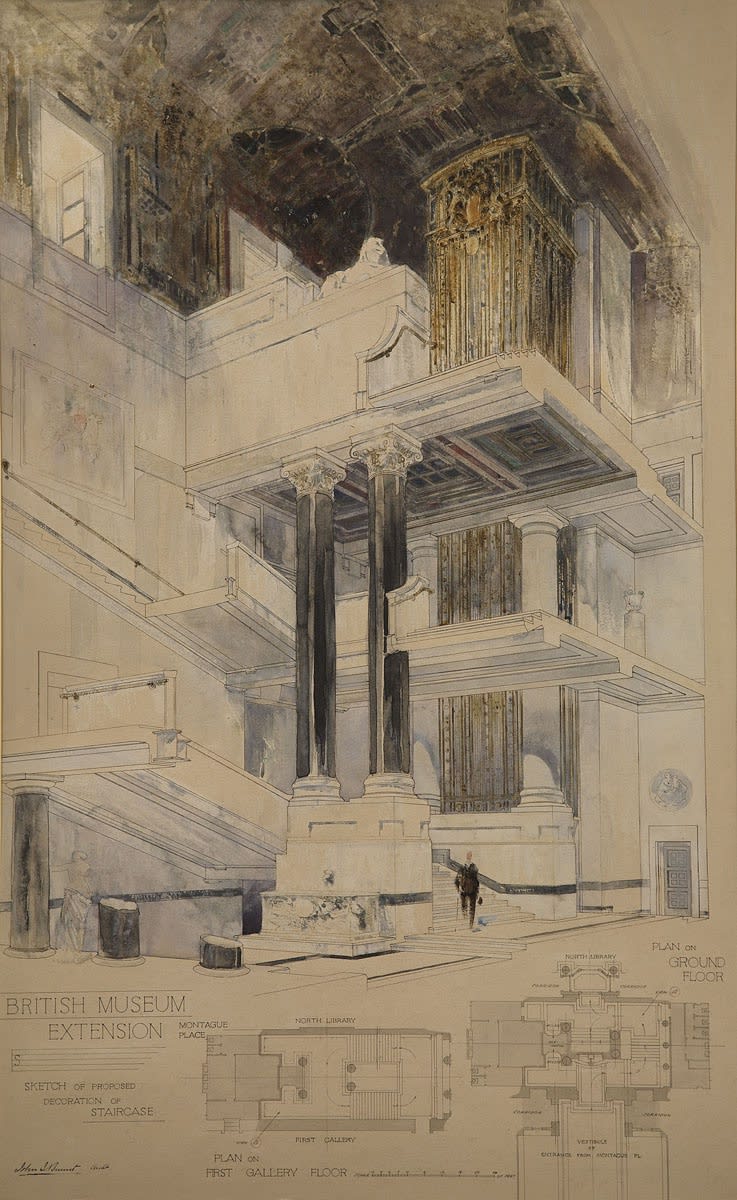
Burnet junior carried out his training in Paris, and much of what he observed and learnt there was to be used in his subsequent practise. In later life he also carried out extensive study visits to both Italy and the United States of America.
He rarely sketched his plans on a large scale, preferring to put down his initial ideas on a very small scale. These were then traced and developed and gradually increased in scale. He claimed he “could not see” a design until he had drawings from every angle down to the minutest of detail. Amongst his major commissions was the pavilion for the Edinburgh International Exhibition of 1886.
After years of trying, in 1903-04 Burnet finally secured his breakthrough in London when he was selected from a shortleet of 7 to be entrusted with the designs for the enlargement of the British Museum.
His master plan, heavily Parisian in its influence and concept, would have seen the building expanded on all four facades, but this was never realised. The part which was completed by the outbreak of war is known as the Edward VII Galleries.
The BM Project led to other London commissions but also marked Burnet’s rise to prominence. 1914 saw him honoured by a knighthood, awarded a bronze medal at the Paris Salon, and elevated to Academician rank at the Royal Scottish Academy.


